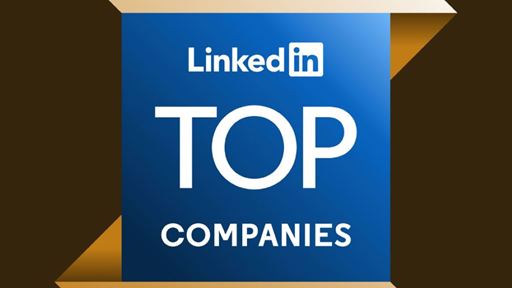- 401(k), 403(b) and IRA Account Balances All Increased at Year End
- Women in the Not-for-Profit Market Saving at Higher Rates Than Men, Bucking Traditional Gender Savings Behaviors
- Gen Z-ers Committing to Retirement Savings Through Significant Increase in Opened Accounts
BOSTON, February 23, 2023 – Times are challenging everywhere: according to recent Fidelity Investments® research, nearly three in four (74%)[1] workers around the world identify the impact of the cost of living and rising inflation as the No. 1 cause of stress in their lives. Yet at the same time, nearly everyone (95%)[2] identifies being financially comfortable in retirement as a long-term goal. Fortunately, at least in America, despite these concerns around economic uncertainty, retirement savers have their eye on the prize and are continuing to invest in their future, according to Fidelity’s latest retirement trends analysis.
Fidelity Investments, one of the country’s leading workplace benefits providers[3] and America’s No. 1 IRA provider[4], today released its Q4/year-end 2022 analysis of savings behaviors and account balances for more than 43.4 million IRA, 401(k), and 403(b) retirement accounts. The good news is that account balances are up and retirement savers are continuing to focus on the long-term, despite some immediate-term pressures: total 401(k) savings rates remained steady, the number of IRAs on Fidelity’s platform continued to increase, and the percentage of employees with 401(k) loans at the end of 2022 remained low for a seventh consecutive quarter.
“Given all the stresses in the world today, such as natural disasters and geo-political events, Americans continue to confront challenging times in our economy,” said Kevin Barry, president of Workplace Investing at Fidelity Investments. “Fortunately, the data shows that retirement savers understand the importance of saving for the long-term, despite market shift. We are encouraged to see people look past the current volatility and continue to make smart choices for their future.”
Highlights from Fidelity’s Q4 2022 analysis include:
- Average retirement account balances have increased from third quarter. The average IRA balance[5] was $104,000 in Q4 2022, a 2% increase from last quarter and 36% increase from ten years ago. The average 401(k) balance[6] increased to $103,900 this quarter, up 7% from Q3 2022 and up 34% from ten years ago. The average 403(b) account balance[7] increased to $92,683, up 6% from last quarter and a 56% increase from ten years ago.
Average Retirement Account Balances
Q4 2022 | Q3 2022 | Q4 2021 | Q4 2012 | |
IRA | $104,000 | $101,900 | $135,600 | $76,700 |
401(k) | $103,900 | $97,200 | $130,700 | $77,600 |
403(b) | $92,683 | $87,400 | $115,100 | $59,600 |
- Gen Z 401(k) savers are continuing to increase their balances. Although their balances are relatively smaller, among Gen Z[8] savers, who are heavily invested in target date funds, the average account balance increased by 23% over last quarter – the highest of any group. Gen Z account balances are also up 14% from Q4 2021, which makes them the only group that had positive growth over the last year. As of Q4, 84% of Gen Z savers have all of their 401(k) savings in a target date fund. In the not-for-profit market, almost 70% of participants have invested 100% of their assets in target date funds.
- The number of IRA4 accounts continues to increase, especially among Gen Z and Millennials. The total number of Fidelity IRA accounts continues to climb, reaching 13.6 million, a 10.2% increase over Q4 of last year. Across generations, Roths tend to be the retail retirement savings vehicle of choice, with 61.3% of all contributions going into a Roth in Q4 2022.
- Gen Z is making major strides with retirement savings, opening 71% more IRA accounts compared to Q4 2021. Millennial accounts increased by 22% since last year; Millennial Roth IRA accounts with a contribution increased by 1.9% year-to-date.
- IRA account growth for females saw a year-over-year increase of 74% for Gen Z and 23% for Millennials.
- Members of the not-for-profit workforce have also maintained strong savings rates across genders and generations, with strong improvements in retirement readiness over the last ten years. Since 2013, the average savings rate has increased to 11.4%, an improvement of 3.3%.
- Total 401(k) savings rates hold steady. The total savings rate for the fourth quarter, which reflects a combination of employer and employee 401(k) contributions, held fairly steady at 13.7% (compared to 13.8% in Q3 2022 and 13.9% in Q2 2022), which is still just below Fidelity's suggested savings rate of 15%. While pre-retiree Boomers continue to save at the highest levels (16.5%), Gen Z saving levels remain fairly consistent at 10.2% (versus 10.3% last quarter).
- Although men continued to save at higher rates than women (14.4% vs. 13.5%) for 401(k)s, the total 403(b) savings rate for women (11.7%) actually exceeds the total savings rate for men (11.5%).
- Contribution rates slightly increased. More than one-third increased their contribution rate over the last year. Among the 401(k) savers that increased their contribution rate, the average increase was 2.6%.
- Outstanding 401(k) loans and average loan amounts continue to trend downward, with 401(k) loans matching the lowest percentage on record. The percentage of participants with a loan outstanding remained at 16.7% for Q4 2022—down from 17% a year ago and 21% five years ago. Only 3.2% of Gen Z workers had an outstanding loan at year-end.
“Year over year, the trends are consistent – if you start saving earlier and avoid reacting to market volatility, you will be better off in the long run,” said Joanna Rotenberg, president of Personal Investing. “This analysis shows that younger generations are sticking to their plans and working on building good savings habits – from budgeting daily expenses and automatically increasing contributions to taking advantage of an employer match. This is especially important during periods of inflation when the money you’re accumulating needs to go further.”
For additional information on Fidelity’s Q4 2022 analysis, click here to access Fidelity’s “Building Financial Futures” overview, which provides additional details and insight on retirement trends and data. In addition, Fidelity also offers a variety of other resources to learn more about retirement planning, including helpful Viewpoints articles such as “How to take control of your retirement” and a new site dedicated to engaging the next generation of investors.
About Fidelity Investments
Fidelity’s mission is to inspire better futures and deliver better outcomes for the customers and businesses we serve. With assets under administration of $10.3 trillion, including discretionary assets of $3.9 trillion as of December 31, 2022, we focus on meeting the unique needs of a diverse set of customers. Privately held for over 75 years, Fidelity employs nearly 67,000 associates who are focused on the long-term success of our customers. For more information about Fidelity Investments, visit https://www.fidelity.com/about-fidelity/our-company.
Keep in mind that investing involves risk. The value of your investment will fluctuate over time, and you may gain or lose money.
Past performance is no guarantee of future results.
Dollar cost averaging does not assure a profit or protect against loss in declining markets. It also involves continuous investment in securities, so you should consider your financial ability to continue your purchases through periods of low price levels.
Target Date Funds are an asset mix of stocks, bonds and other investments that automatically becomes more conservative as the fund approaches its target retirement date and beyond. Principal invested is not guaranteed.
# # #
Fidelity Brokerage Services LLC, Member NYSE, SIPC
900 Salem Street, Smithfield, RI 02917
Fidelity Distributors Company LLC,
500 Salem Street, Smithfield, RI 02917
National Financial Services LLC, Member NYSE, SIPC,
245 Summer Street, Boston, MA 02110
1074337.1.0
© 2023 FMR LLC. All rights reserved
[1] Based on the “Fidelity Global Sentiment Survey 2022.” The data collection, research, and analysis for the above markets was completed in partnership with Opinium, a strategic insight agency. The sample consisted of 20,000 respondents and data collection took place between August 2022 and September 2022.
[2] Based on the “Fidelity Global Sentiment Survey 2022.” The data collection, research, and analysis for the above markets was completed in partnership with Opinium, a strategic insight agency. The sample consisted of 20,000 respondents and data collection took place between August 2022 and September 2022.
[3] Based on PLANSPONSOR Magazine's "2021 Recordkeeping Survey," June 2021 and "Plan Administration Guide, Part 1" which offers insight into the provider marketplace for defined benefit (DB), stock plan and health savings account (HSA) administration, May 2018.
[4] Based on Cerulli Associates’ Top-10 IRA Providers by AUA, 2Q 2020–2Q 2022.
[5] Fidelity business analysis of 13.6 million IRA accounts as of December 31, 2022.
[6] Analysis based on 24,500 corporate defined contribution plans and 22.0 million participants as of December 31, 2022. These figures include the advisor-sold market but exclude the tax-exempt market. Excluded from the behavioral statistics are non-qualified defined contribution plans and plans for Fidelity’s own employees.
[7] Based on Fidelity analysis of 10,213 Tax-exempt plans and 7.8 million plan participants as of December 31, 2022. Considers average balance across all active plans for 5.8M unique individuals employed in tax-exempt market.
[8] Generations as defined by Pew Research: Gen Z (born 1997-2012), Millennials (1981-1996), Gen X (1965-1980) and Boomers (1946-1964).









